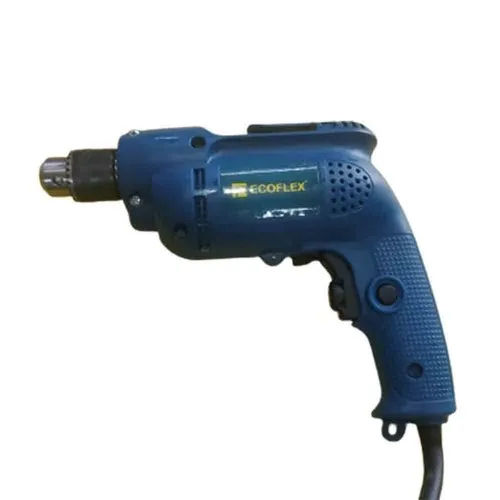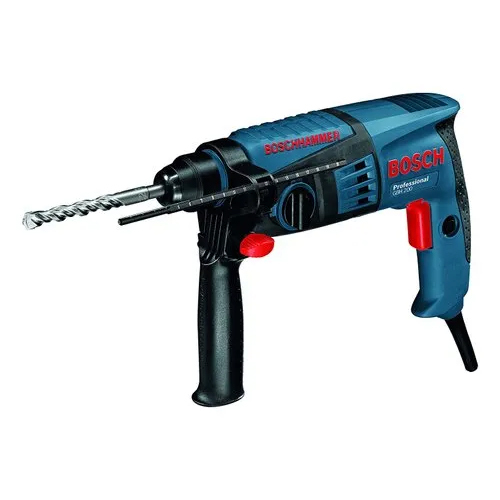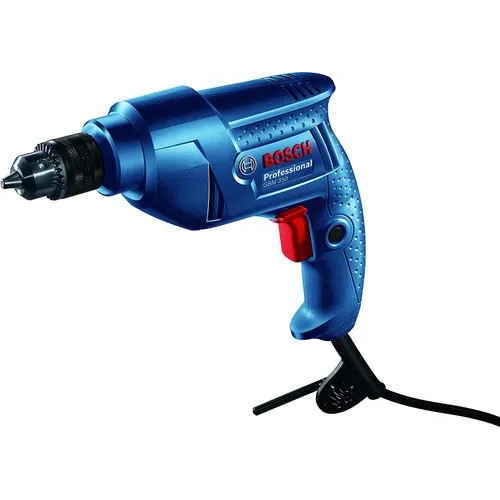230V Percussion Drill
Product Details:
- Product Type Percussion Drill
- Material Metal, Plastic
- Application Industrial
- Rated Voltage 230 Volt (V)
- Power Source Electric
- Warranty Yes
- Color Blue
- Click to View more
230V Percussion Drill Price And Quantity
- 10 Unit
- 1800 INR/Unit
230V Percussion Drill Product Specifications
- 230 Volt (V)
- Yes
- Blue
- Electric
- Metal, Plastic
- Percussion Drill
- Industrial
230V Percussion Drill Trade Information
- Cash Advance (CA)
- 1000 Unit Per Month
- 5 Days
- All India
Product Description
A power tool frequently used in the building, woodworking, and other related sectors is a percussion drill, also referred to as a hammer drill. It is made to make holes in a variety of materials, including metal, wood, concrete, and masonry. In addition to its rotational motion, the percussion drill also uses a striking action to quickly and effectively pierce difficult surfaces.
A typical percussion drill operates as follows:
1. Motor: An electric motor powers the drill and is what rotates the drill bit.
2. Chuck: The chuck is the area of the drill where the drill bit is inserted and held in place. The majority of percussion drills include a keyless chuck that you may manually tighten or loosen.
3. Pounding Mechanism: What separates a percussion drill from a standard drill is its pounding mechanism. The drill bit revolves while a clutch propels a hammering motion. Hard materials like concrete or masonry can be broken through with the help of the hammering motion.
4. The ability to modify speed and torque settings on many percussion drills enables you to fit the drilling requirements to the material you are working with. For stronger materials, lower speeds and higher torque settings are often employed, whereas higher speeds are appropriate for softer materials.
5. Trigger and Handle: To turn on the drill's engine and begin drilling, push the trigger. The handle offers a cosy grip for improved operation stability and control.
It's crucial to put on the proper safety gear, such as gloves, safety glasses, and ear protection, when using a percussion drill. Additionally, be sure to use the appropriate drill bit for the material you are drilling and abide by the manufacturer's guidelines for safe use and upkeep.
Specification
| Max. Drill Diameter | 10mm |
| Warranty | 3 months |
| Power Consumption | 500W |
| Voltage | 230V |
| Chuck Size | 13 mm |
| Brand | Ecoflex |
| Model Name/Number | EF-D-10A |
| No Load Speed | 2800 RPM |
FAQ
1. How exactly does a percussion drill operate?
Ans - In order to drill holes into materials like wood, metal, or brick, percussion drills use a hammering motion to generate force that is delivered to the drill bit. It operates by rapidly striking the material with a hammer as the drill bit spins.
2. What distinguishes an impact drill from a percussion drill?
Ans - The difference between the two is that an impact drill rotates the bit while a percussion drill uses a hammering motion. The impact drill outperforms the percussion drill in terms of speed and effectiveness.
3. How do holes in materials get made using a percussive drill?
Ans - By using its pounding motion to impact the material with a quickly moving hammer while the drill bit is spinning, a percussion drill punctures materials. The drill bit, which creates the hole by removing parts of the material, receives the force supplied by the hammering motion.
4. Which materials can be drilled with a percussion drill the best?
Ans - The finest materials to drill with a percussion drill are hard ones like steel, masonry, and concrete. A percussion drill can also be used to drill soft materials like wood, plastic, and aluminium, however larger drills and slower drilling speeds are necessary for a cleaner hole.
5. What safety measures have to be followed when employing a percussion drill?
Ans - It's crucial to use a percussion drill while wearing safety goggles and earplugs. To minimise wear and friction, keep the drill bit sharp at all times. Before drilling, confirm that the material is sturdy and secure. Additionally, be cautious when drilling close to combustible materials because sparks may be produced.











